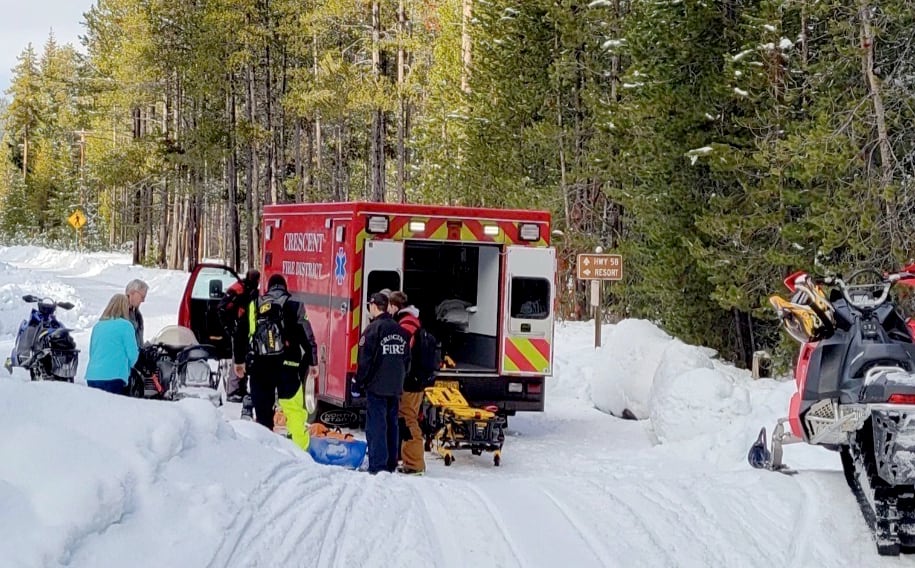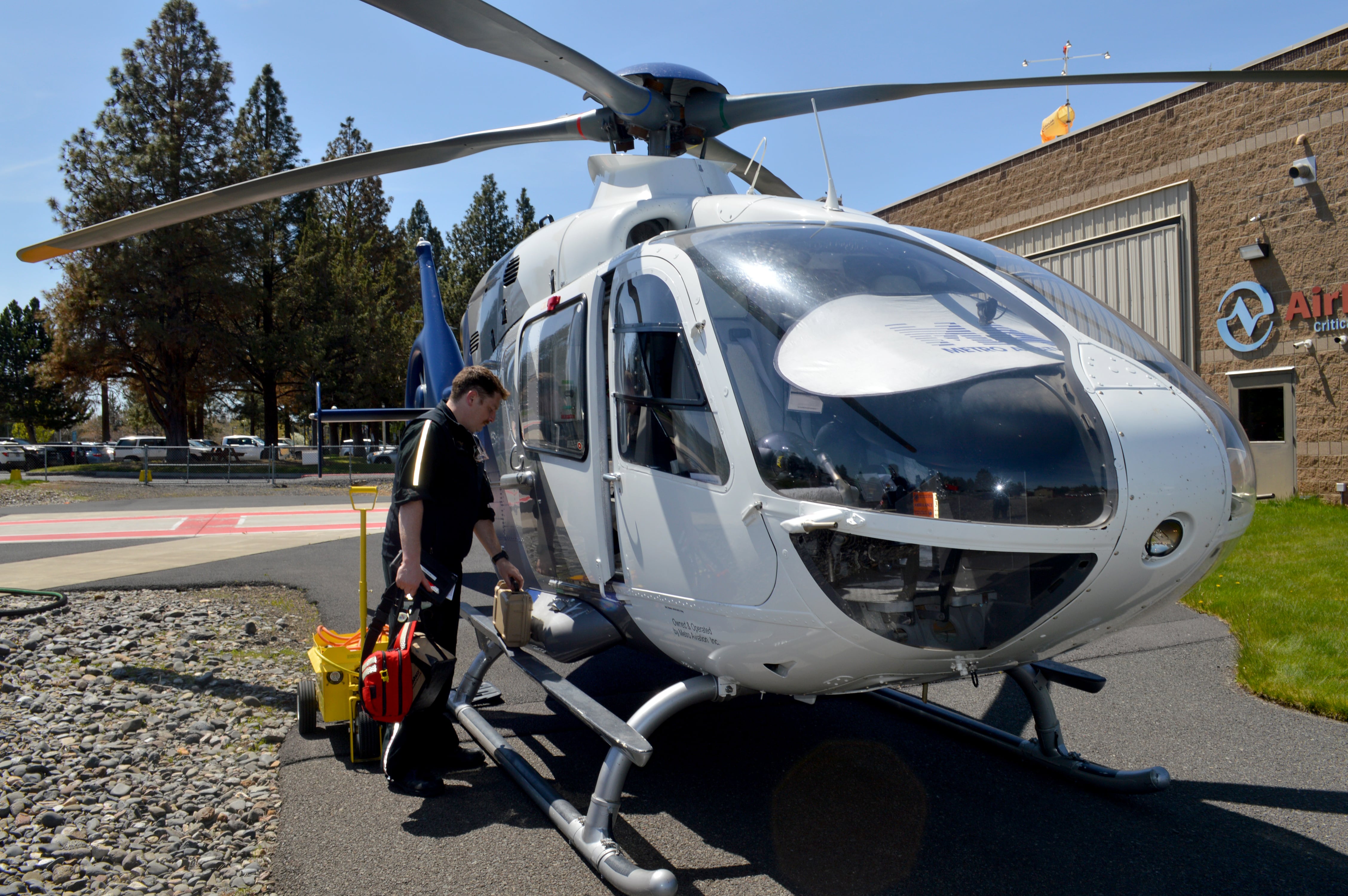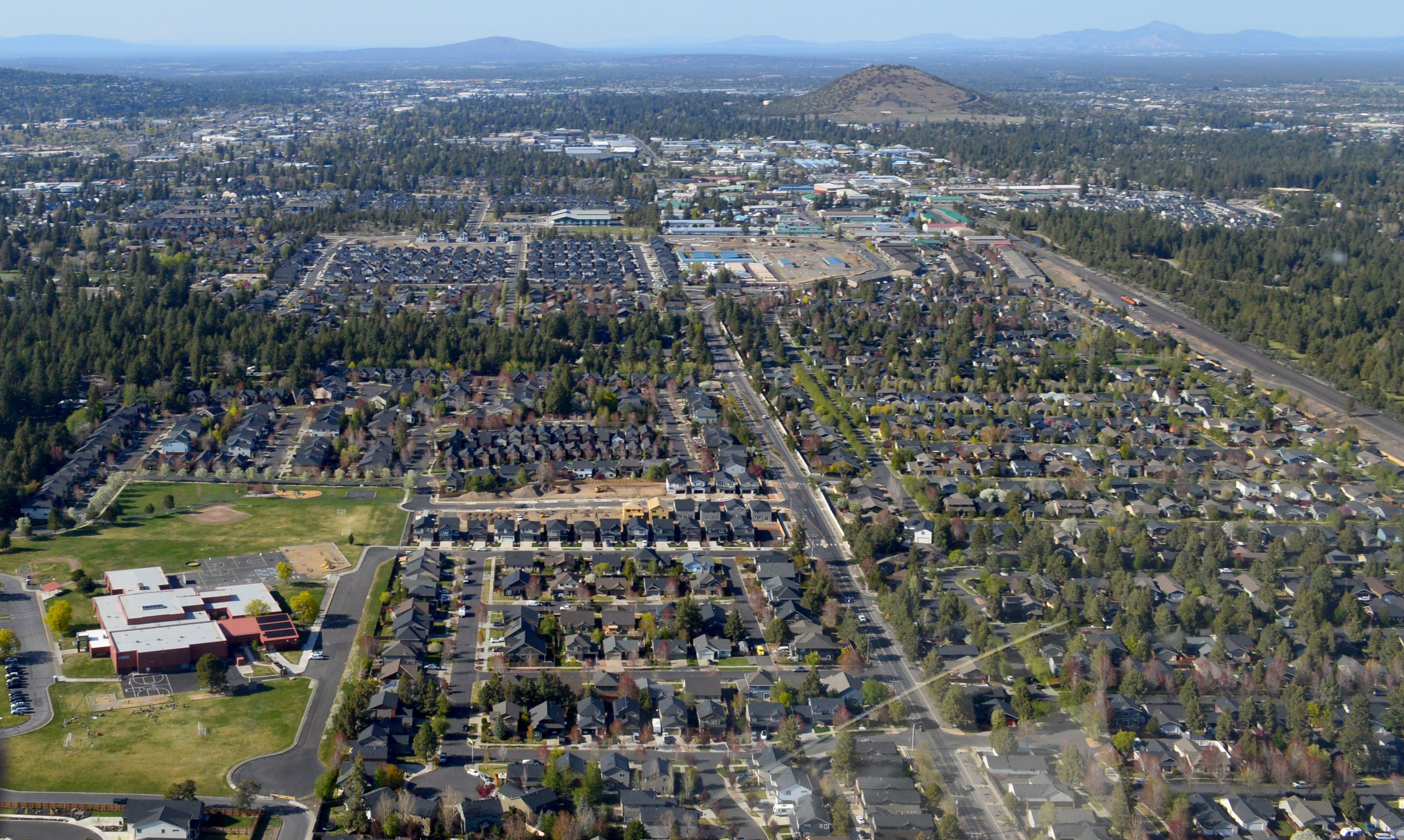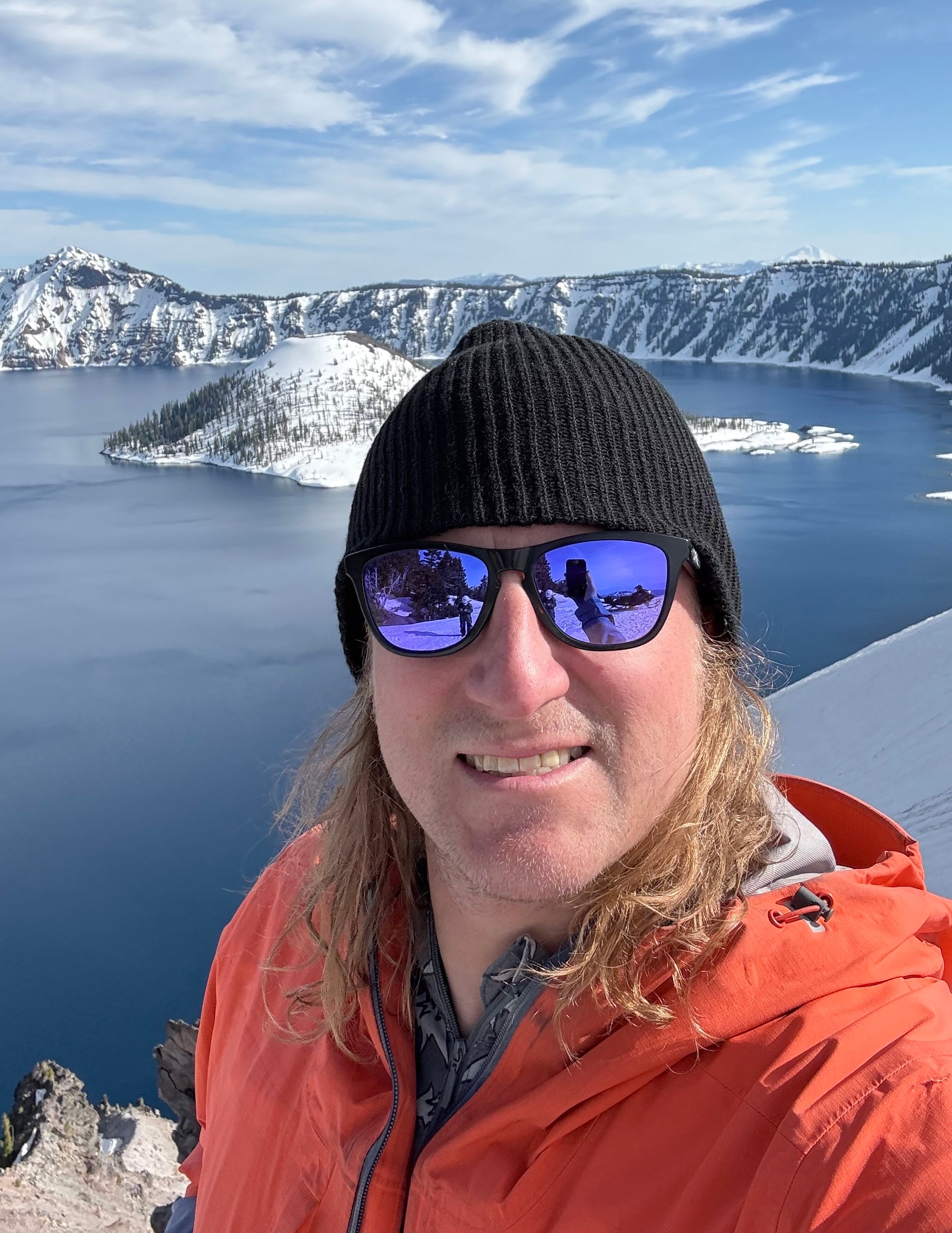

Published on: 06/25/2025
This news was posted by Oregon Today News
Description

On New Year’s Day in 2023, Erik Kerr met up with a snowmobiling group near Crescent in south-central Oregon, intending to ride through the forest to the rim of Crater Lake.
But he never made it that day.
“I hit the tree dead between the skis,” Kerr said recently. “My torso went forward. My head missed the tree somehow. I could have easily broken my neck.”
Thrown off the snowmobile, Kerr landed in a snow drift, off trail and out of sight. He lay in the snow watching the other riders pass by unaware.
“My leg was snapped,” Kerr said. “I’m just freaking out. I’m like, ‘Great. Nobody’s going to see me.’”
But Kerr was luckier than most who find themselves injured in Oregon’s backcountry. Riding behind the group happened to be James Wilson, an EMT and the fire chief of Crescent. Wilson sprang into action.
“I came across him, did a quick patient assessment, saw that there was definitely a potential fracture going on there and a lot of pain,” he said.

Even with the good fortune of being found right away, Kerr waited over four hours to make it to a hospital bed in Bend. Thick fog in the region meant going by helicopter wasn’t an option.
Wilson said accidents like Kerr’s are common in his agency’s coverage area, and the calls for help are increasing.
From Crescent in Klamath County, Wilson’s EMS crew covers over 1,000 square miles. During busy holiday weekends, the population can surge to over 10,000 people.
“We’ve gone from an agency that was very small and with under 300 calls a year, five or six years ago, to where this year we’re on track to breaking 800 calls for service,” Wilson said.
Roughly 70% of Oregon’s ground ambulance service areas are in rural communities, according to the state’s Office of Rural Health.
Without a state-mandated tax base to fund local EMS, many rural agencies struggle to staff and maintain ground services, relying frequently on costly air resources and unpaid volunteers.
The level of medical care a volunteer EMS provider can offer varies greatly. Oftentimes they’re certified as EMTs and are only trained to provide basic care. Unlike paramedics, they can’t start an IV line, administer medication or intubate a patient. The years of schooling required to be a paramedic are demanding, and the associated costs are steep — around $20,000.

Hiring and retaining professional medics is another hurdle, Wilson said. Rural agencies typically offer smaller salaries than their urban counterparts. It’s a problem that Wilson said he faces in Crescent, and one that Oregon Office of Rural Health Director Robert Duehmig said is being felt statewide as older medics age out of the job.
“The population of existing EMTs is starting to retire out,” Duehmig said. “And some of the EMTs that are working are older, and that becomes a bigger danger to them trying to lift people and respond to those kinds of calls, particularly in bad weather.”
Duehmig said there are grants available to help support training for staff and volunteers at rural agencies. His office has a staff member dedicated to helping agencies find ways to increase their workforce and connect to resources. A bill under consideration in the Oregon Legislature now would raise the annual tax credit available to rural medical volunteers from $250 to $1,000.
Chris Jones volunteers for Crescent Fire, and understands firsthand the need for well-trained help. He spent 25 years as a professional paramedic before retiring in 2023.
“Rural areas need extra people,” Jones said. “I figured I have some extra time available, might as well volunteer.”
Responding to emergencies in isolated areas takes dedication, with or without a paycheck, he added.
“It’s a love for the job, a love for the rural community,” he said.
His son, Cruz Jones, also volunteers with Crescent Fire as a resident volunteer student. He’s working toward his paramedic certifications at Central Oregon Community College. By using a Federal Emergency Management Agency grant and its own funds, Crescent Fire is paying for his education. He even lives at the station and volunteers extra time to fill shifts.
The student-resident program is one way Crescent has been able to adequately staff its ambulances, Wilson said. Depending on the day and location, it can take up to four hours for a ground ambulance to arrive after a 911 call in rural Oregon.
Air ambulance operators said they are increasingly getting calls to transport patients from rural areas.

Paul Pearlmutter is a flight respiratory therapist at AirLink Critical Care Transport, a medical flight company based in Bend. He’s flown with the private company for the last decade and said aside from inter-hospital transfers, the majority of its calls to scenes are in outlying areas. Pearlmutter said he’s noticed an increase in calls for patients who aren’t critically sick or injured.
“Sometimes they’re less critical but still need to get to Bend,” Pearlmutter said. “We will go fly just to help alleviate the stress on the [ground] EMS in that system.”
A helicopter ride can range widely from a few thousand dollars to over a hundred thousand dollars, according to AirLink representative Marta Jaroch.
One mother’s seven-minute helicopter ride to transport her premature baby between hospitals racked up $40,000 in bills, Jaroch said.
EMS leaders said they would like to avoid using costly air resources for less-critical patients. To help, some rural agencies east of the Cascades are working together to build up the volunteer base of trained first responders. Some of them, like North Lake County EMS in Christmas Valley, are entirely owned and operated by volunteers.

In April, sagebrush and juniper trees dotted the landscape around a turnout area on Highway 31 near Fort Rock Junction in Lake County. Two cars were parked with their front bumpers inches apart. Inside the vehicles, actors posed as if they’d just been in a wreck. A woman was draped over the steering wheel, another was lying against the passenger door frame and a child in the back was slumped over in a booster seat.
North Lake County EMS and AirLink set up this scene as part of a training for over a half a dozen rural EMS agencies across three counties. The actors were there to help first responders prepare for a mass-casualty event, said AirLink’s Jaroch.
“The EMTs are going to ask them questions and they’re going to say, ‘Well, I’m feeling nauseated. My neck hurts, my head hurts, or I’m having severe abdominal pain,’” she said.
Katie Lossing, an EMT student at Klamath Community College, leaned into the car window.

“Hey sweetheart, you with us?” Lossing asked the driver
“Pressure. My head hurts,” the woman replied.
After assessing the victims, the group convened to determine which patients were critical and required air transport.
It’s a scenario that volunteers need to be familiar with when working in rural areas, Jaroch said.
And their efforts are appreciated, especially by people like Erik Kerr — the snowmobiler who broke his leg two years ago.
He’s healed up now, and recently returned to the backcountry to finish his ride to Crater Lake.
Jennifer Baires is a freelance journalist based in Bend. She can be reached at [email protected].
Editor’s note: OPB is a nonprofit, statewide news organization with a mission to tell stories for communities in all parts of Oregon and Southwest Washington. As part of that goal, we work with partner news organizations and freelancers to identify stories like this that might otherwise go untold. If you have an idea for a story, live in an area outside Portland and want to work with us, send your freelance pitches to [email protected].
News Source : https://www.opb.org/article/2025/06/25/emergency-medical-care-rural-oregon/
Other Related News
06/25/2025
After a year and half of investigating the top US aviation investigator on Tuesday formall...
06/25/2025
As Hilary Nichols wife was wheeled into an operating room for an emergency cesarean sectio...
06/25/2025
You might say a hole developed in this popular fast food partnershipHow bad is this going ...
06/25/2025
Senate Republican Leader Daniel Bonham R-District 26 clearly loves the Portland Trail Blaz...
06/25/2025







